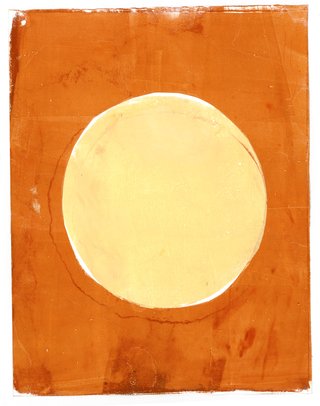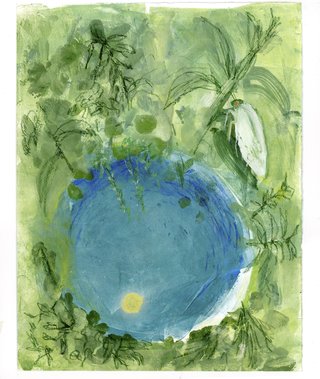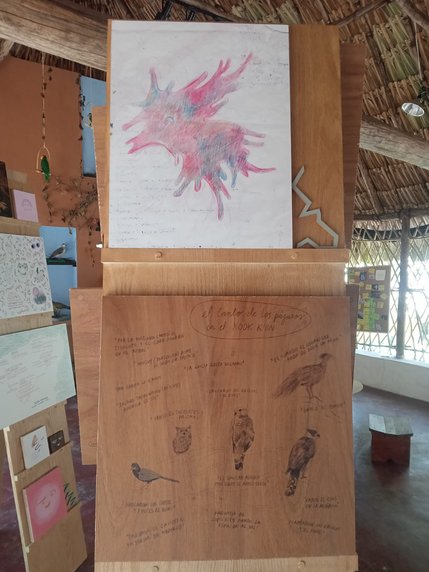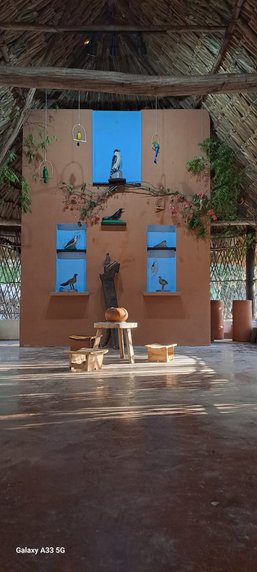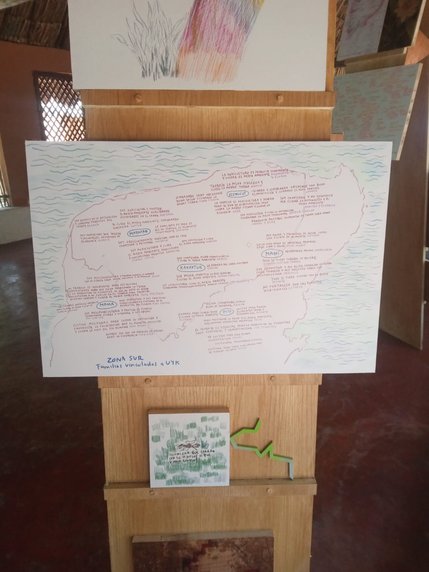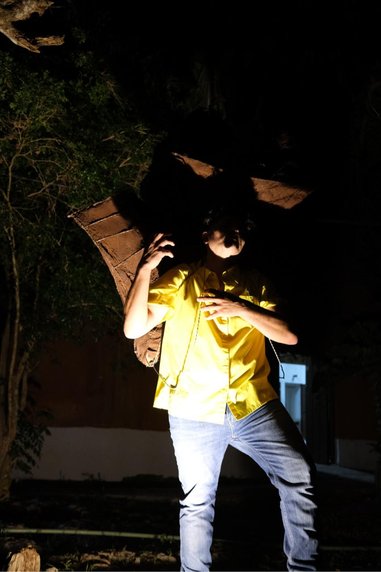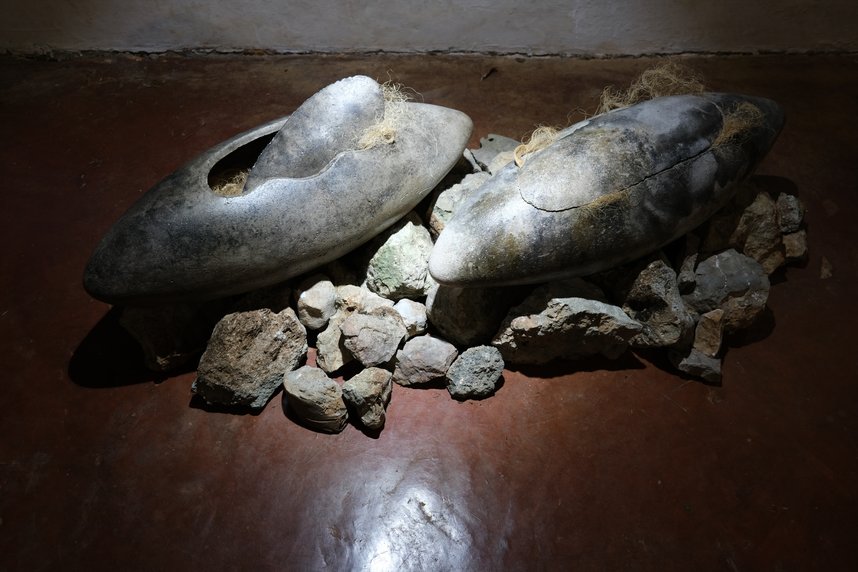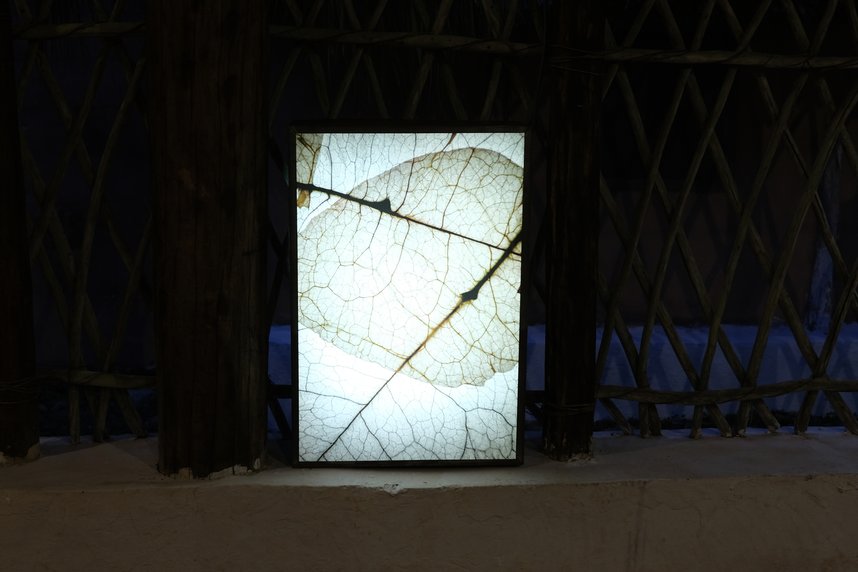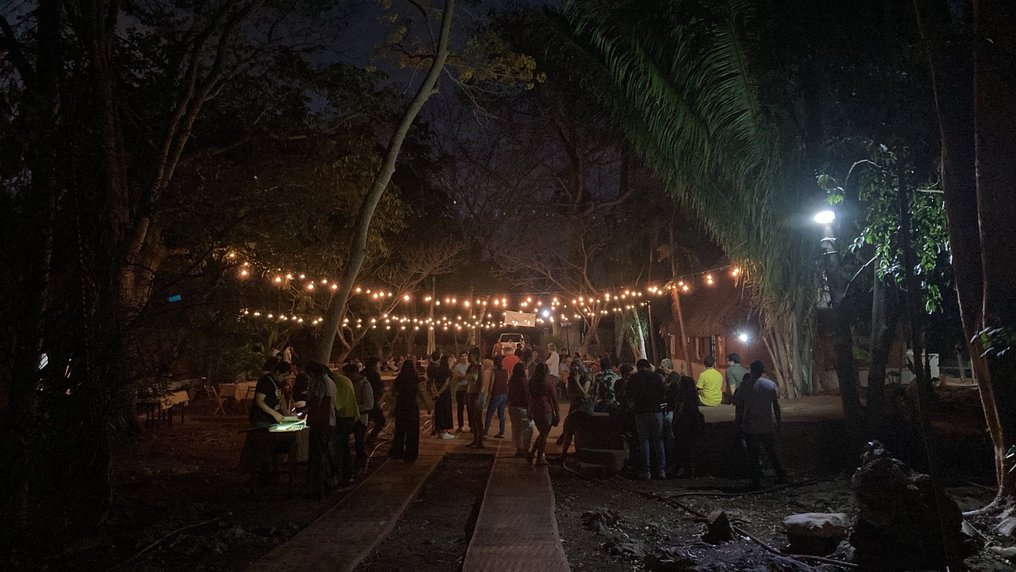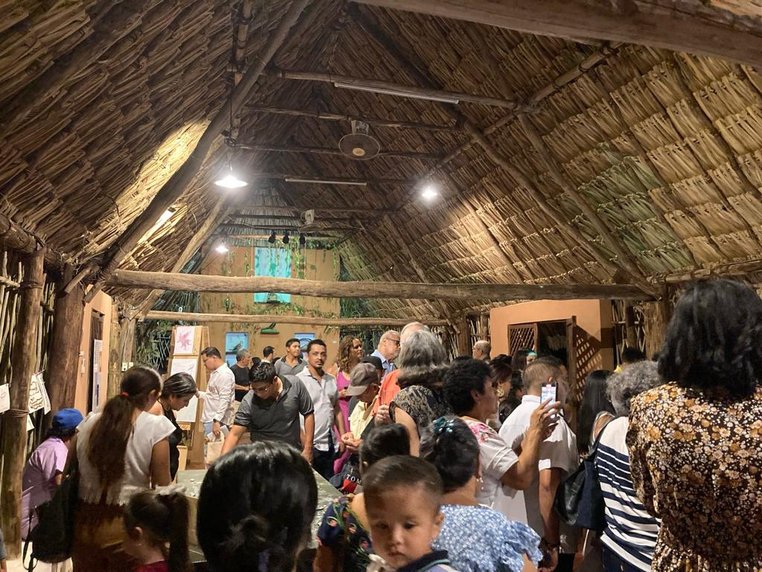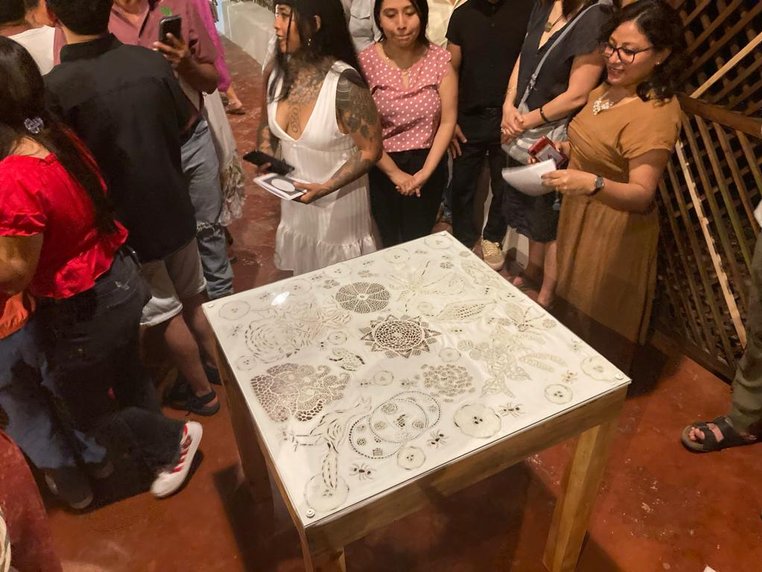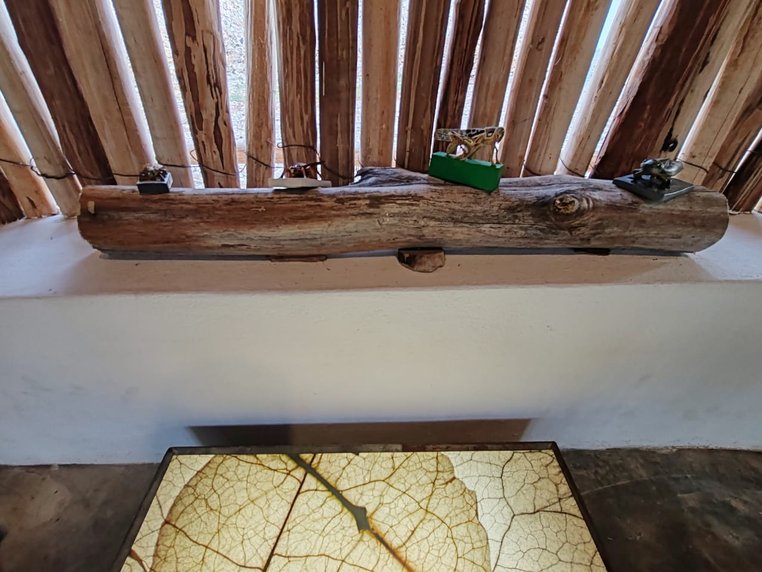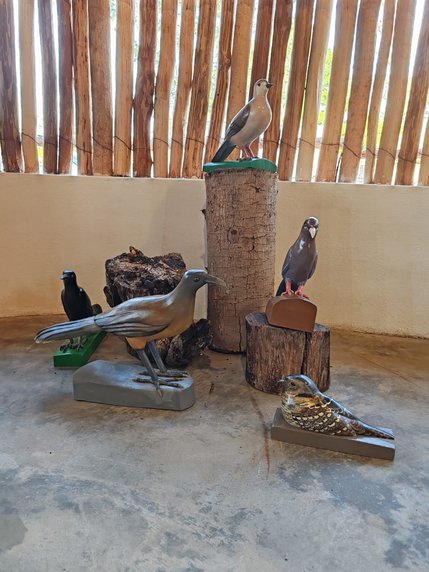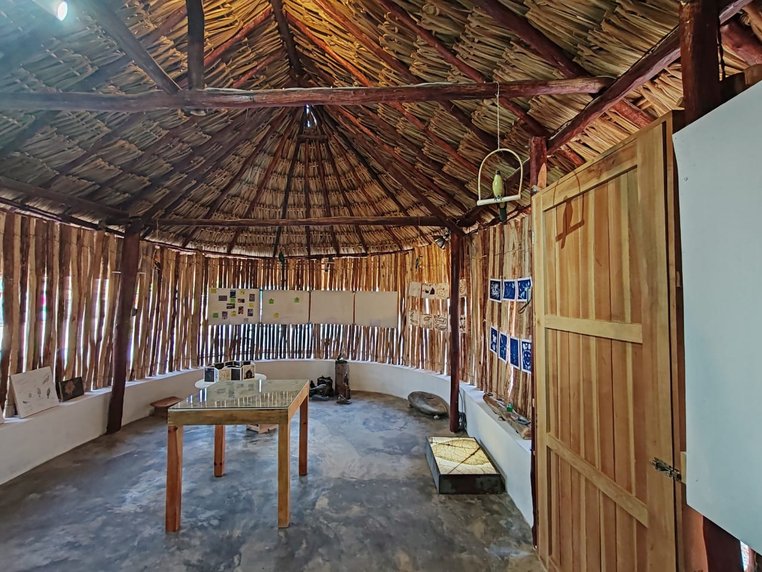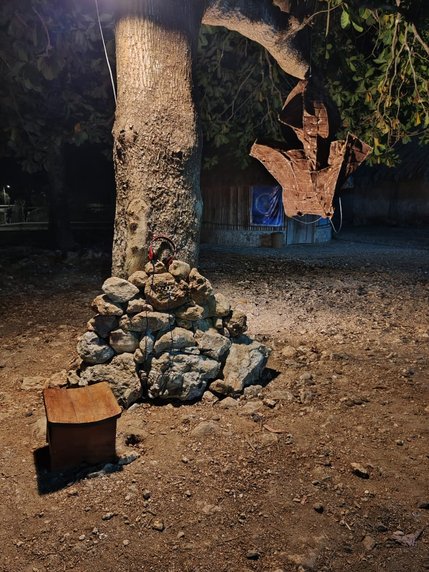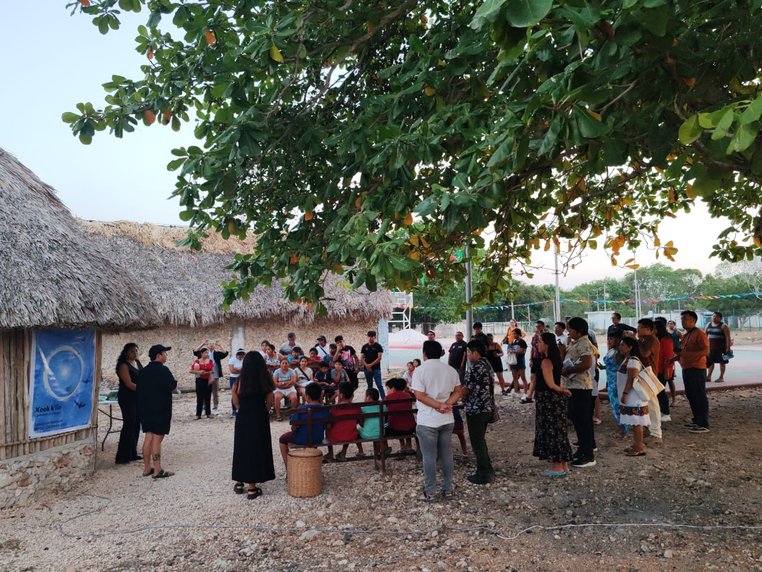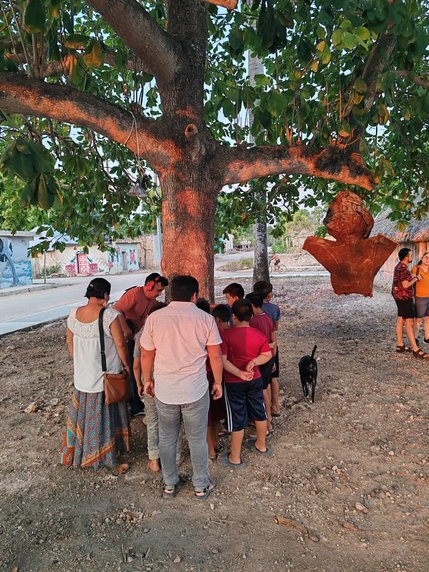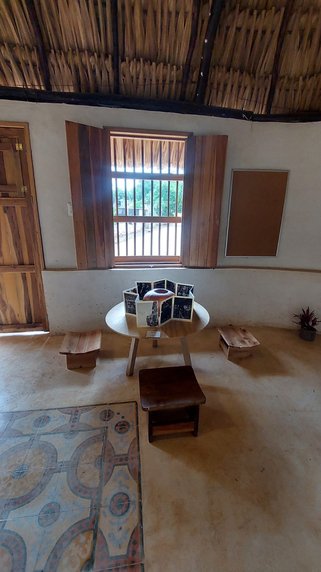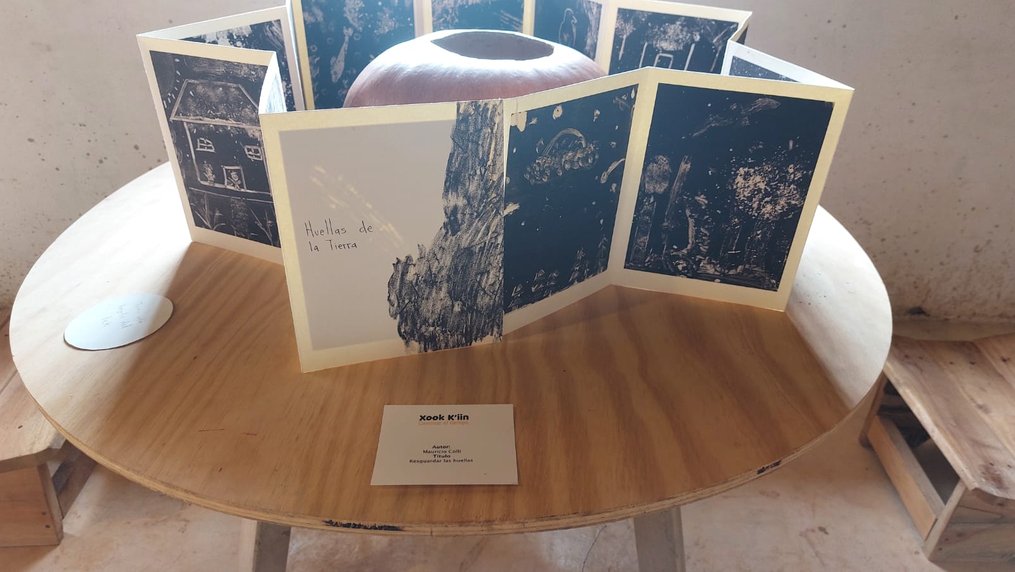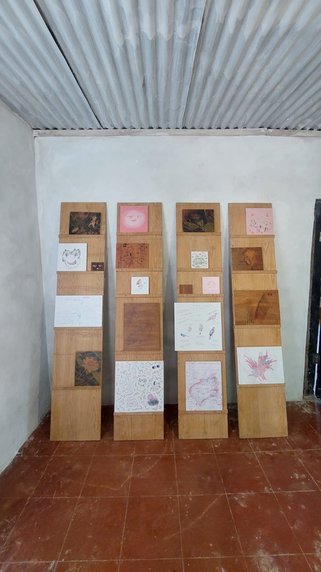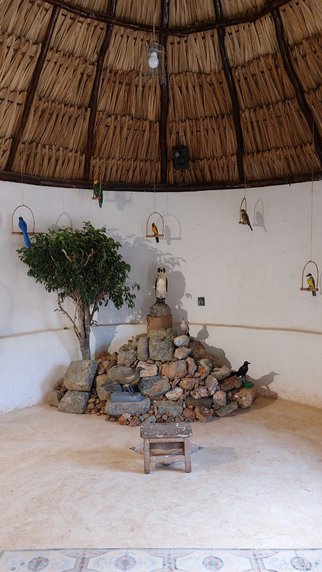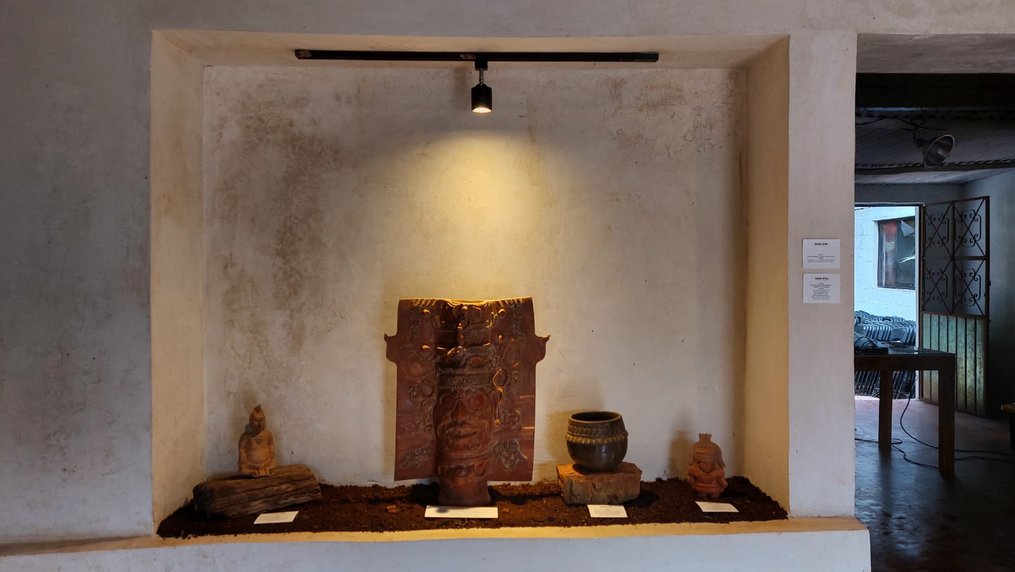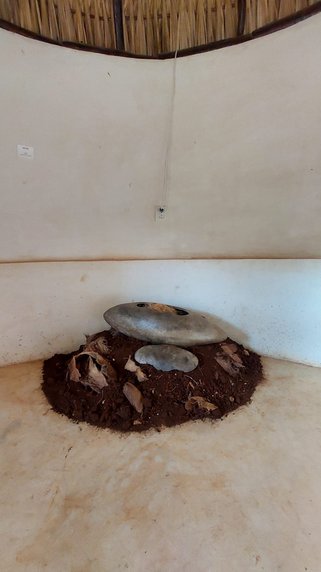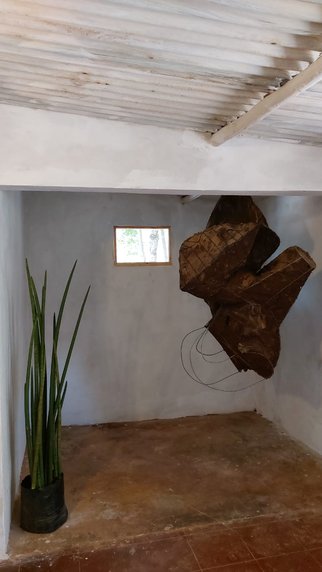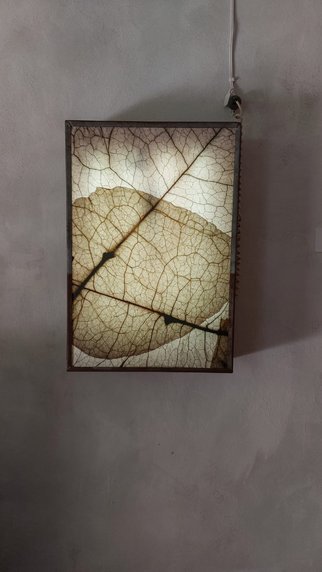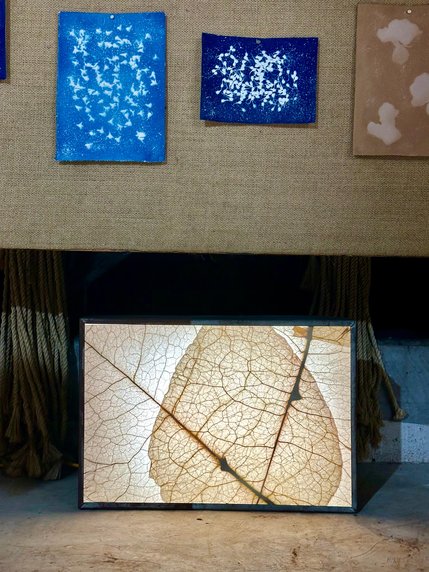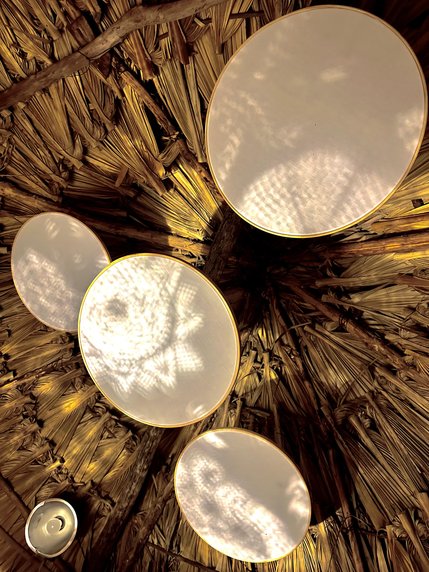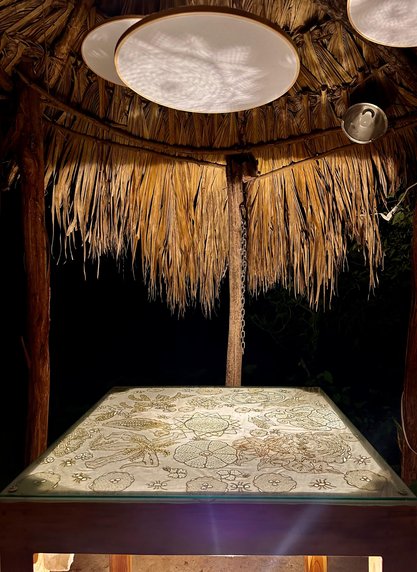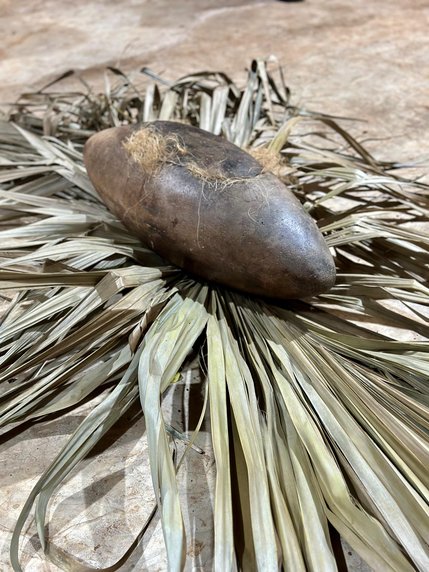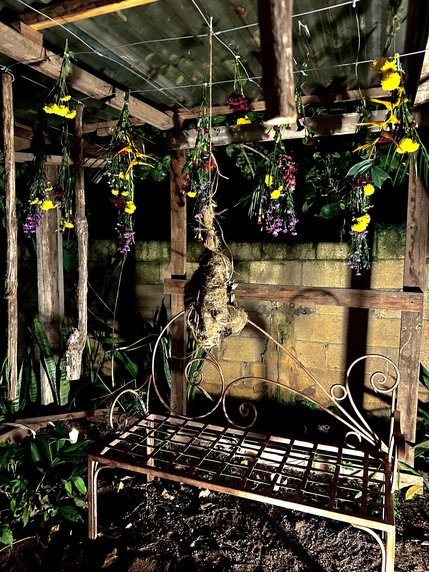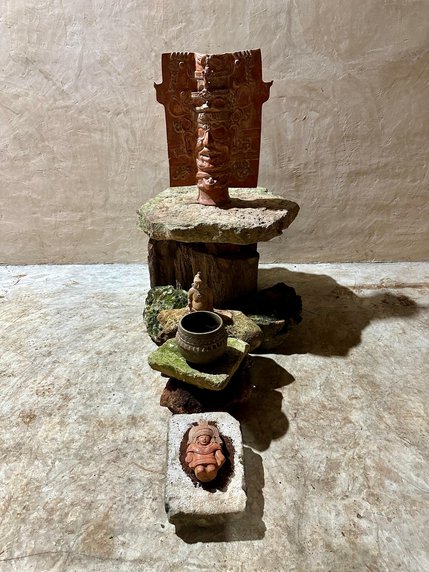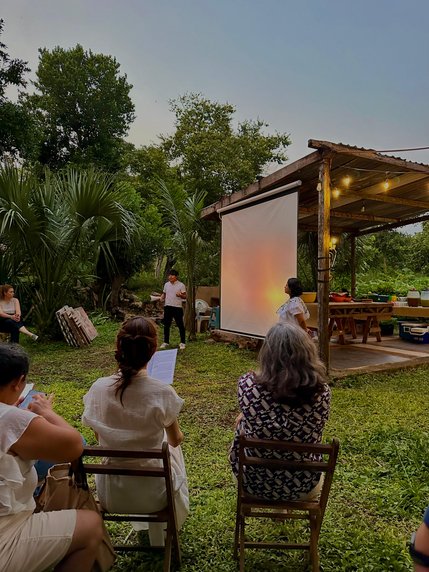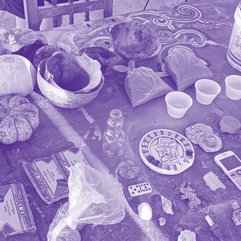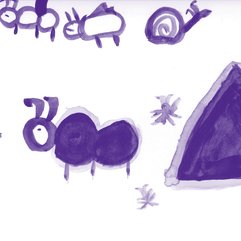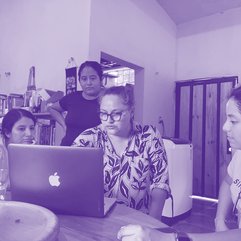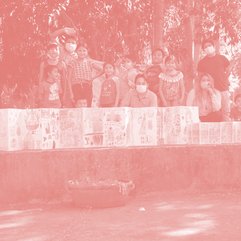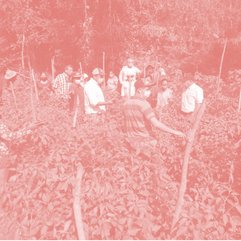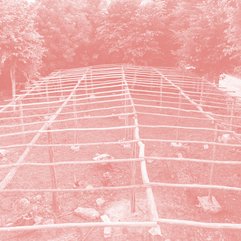Xook k'iin
This travelling exhibition is on view in Yucatán, Mexico during 2024 and until february 2025.
Vea la página en español aqui.
Xook k'iin. Caminar el tiempo
Túulis uuj, túulis ja’ab
túulis k’iin, túulis áak’ab,
túulis iik’
ku xíimbal xan.
Every moon, every year
all day, all night,
every wind
walks and passes too.
Chilam Balam de Chumayel
The exhibition Xook k'iin. Caminar el tiempo is the continuation of the inaugural exhibition Xook K'iin. Perceiving temporalities, which was on show in Berlin from April 2023 to Feruar 2024. The new exhibition was curated in collaboration with four community cultural centres on the Yucatán Peninsula, namely U Yits Ka'an, Escuela de agricultura ecológica in Maní, the Fototeca Tuzik in Felipe Carrillo Puerto, Quintana Roo, the Centro Cultural Comunitario Cecilia in Tinún, Campeche, and Iin ki kalante in Tecoh, Yucatán. The exhibition is dedicated to the forms of knowledge and practices of the Xook k'iin as well as related social, political and ecological issues. The exhibition is on display in each cultural centre for around two months and is accompanied by a public programme organised by the respective cultural centres.

 Mariana Alcántara
Mariana Alcántara
Curatorial text
The exhibition Xook k'iin. Caminar el tiempo (Xook k'iin. Walking with time) explores practices, knowledges and relationships that are linked to this way of interpreting, feeling and living the environment, that enable a form of sensing the weather, the climate and the future, in order to plan life and the work in the cornfield in tune with it. It looks at the social, political and ecological layers and networks that unfold from the xook k'iin - from the work in the milpa, food sovereignty, festive and spiritual manifestations, to its importance in confronting climate change, industrialisation, ecocide and deforestation.
It is an invitation to discuss what Xook k'iin means today. What does it mean to practice Xook k'iin? What do we listen to, feel and observe? How do we relate - with the Xook k'iin - to our environment, the mountain, the territory? How do the cycles of nature pass through us in our daily lives? How do the observation of so called announcements or bio-indicators, temporal cycles, women's knowledge and the body-territory interweave with it? How can we and new generations (re)connect ourselves to this knowledge, which is closely intertwined with territories, cultures, memories, languages, and practices that have been - and continue to be - fragmented and interrupted? How can we walk through time in resistance and with hope?
Each place where the exhibition will be shown has a local context, stories and thematic axes, urgencies and questions. Be it the connection with the local geology, the karst landscape and the water bodies, the observations of the moon and the herbal medicine of the midwives, or the exchange of seeds and the work in the milpa, among others. For this reason, the artistic works also start from a specific place, from the experience and the situated knowledges, from the relational. They were created - and continue to be created - in close dialogue with the spaces and the communities and territories they inhabit.
Participating in the exhibition:
Gerda Gruber, Mauro Pech, Rafiki Sánchez, Patricia Uh, Estela y Santos Chuc, Mauricio Collí, Omar Said, Ajanbel & Killbeat, Vanessa Rivero, Robin Canul y Grecia Gutierrez, Commaya, Narrativas desde la Mayanidad, Mayur y Tushar Vayeda, Colectivo Xkusamo'ob, Patricia Morales, Roger y Rosa Juárez.
Translations into Maya: Yazmín Tuz Chab
Partners:
Abrahán Collí Tun, Julián Dzul Nah, U Yits Ka'an, Fototeca Tuzik', Centro Cultural Comunitario Cecilia, Iin ki kalante.
We would also like to thank all those who contributed to the exhibition with their time, their wisdom, their practices and teachings from the territory.
You can find the introductory text of the exhibition in Spanish and Mayan in the gallery.
Dates & places:
March - May 2024 - Escuela de Agricultura Ecológica de U Yits Ka'an, in Maní.
May - July 2024 - Fototeca Tuzik', in Felipe Carillo Puerto.
August - September 2024 - Centro Cultural Comunitario Cecilia, in Tinún.
October - March 2025 - Iin ki kalante, in Tecoh.


The exhibition in U Yits Ka'an in Maní, Yucatán
16th of March - 5th of May 2024
In U Yits Ka'an we hope that this exchange of knowledge and emotions will strengthen our memory of what our grandmothers and grandfathers have passed on to us - the knowledge of observing and listening to all the voices that speak to us from nature. They encourage us and accompany us on our path as true companions. The xook k'iin makes us clearly aware of the changes we are experiencing today, and at the same time strengthens us to look to the future, shaping it with patience and care together. For us in U Yits Ka'an, the spiritual wealth of our elders is of central importance, and we endeavour to preserve and live it.


At U Yits K'an, guided tours of the exhibition were offered in combination with conversations and workshops starting from different works in the exhibition and the accompanying book Xook k'iin. Walking through time, with adults, school classes, youth and children from the communities in and around Maní in Yucatán.
At the Seed Festival on 27 April 2024, seeds were also collected that will be incorporated into the seed containers, Gerda Gruber's artistic proposal for the exhibition.

 Interpreting natural forms of being with the art work by Mauricio Collí
Interpreting natural forms of being with the art work by Mauricio Collí

 With the art work "Dressing from the depth" by Rafiki Sánchez
With the art work "Dressing from the depth" by Rafiki Sánchez

 Working with the interactive book Xook k'iin. Caminar el tiempo
Working with the interactive book Xook k'iin. Caminar el tiempo

 Seed collection at the Seed fetsival in UYK on 27th of April 2024
Seed collection at the Seed fetsival in UYK on 27th of April 2024

The exhibition in the Fototeca Tuzik'
25th of May - 21th of July 2024.
From the Fototeca Tuzik' we hope that through the exhibition we allow ourselves to reconnect with the sensitivity, observation and listening to which the xook k'iin invites us, to walk with time and contribute to our collective memory. Each piece in this exhibition reminds us of the advices and teachings of our grandmothers and grandfathers. They show us how to move towards the future, but they are also a reminder that within childhood, adolescence and youth lies great knowledge. In this sense, we at the Fototeca Tuzik' are committed to dedicate our work with and around the exhibition to this intergenerational dialogue.


In the Fototeca Tuzik' a variety of activities with many different generations of the community were organized around the different works and topics present in the exhibition:

 With children from the community a version of the UNO game focused on nature observation was created: JUN: Xook k'iin.
With children from the community a version of the UNO game focused on nature observation was created: JUN: Xook k'iin.

 With Santos and Estela Chuc, a bird watching walk was organised.
With Santos and Estela Chuc, a bird watching walk was organised.

 Based on Gerda Gruber's piece, a workshop was held with Iván Jiménez from Maní, on the collection of seeds.
Based on Gerda Gruber's piece, a workshop was held with Iván Jiménez from Maní, on the collection of seeds.


The exhibition in the Centro Cultural Comunitario Cecilia, Tinún, Tenabo, Campeche.
03rd of August - 29th of September 2024
In the Centro Cultural Comunitario Cecilia we celebrate life and contemplation as a seed that germinates and flourishes in the amazement and wonder of the children and youth of Tinún, Tenabo, Campeche.
Our Xa'anil naj is a space for listening and a nest of knowledge; a common house that guards the living memory of our ancestors present in the fire, in the clouds, in the inherited song of the birds, in the red earth, the jungle, the hills, the ears of corn, the cooing of crickets and frogs.
We remember our past and reclaim our Mayan heritage through the knowledge and observation of our grandmothers and grandfathers, readers of the times and cycles of life.
Crédito imágen: Sonetos andantes de la vida y cultura


The Centro Cultural Comunitario Cecilia hosted artist workshops on cinema printing and cyanotypes, bird watching and projects on the topic of seed diversity.

 Las huellas de la tierra - The traces of the earth, Workshop with Mauricio Collí
Las huellas de la tierra - The traces of the earth, Workshop with Mauricio Collí



 Bird watching with Estela & Santos Chuc
Bird watching with Estela & Santos Chuc

 Workshop Utsikbal Tuunich with Mauro Pech
Workshop Utsikbal Tuunich with Mauro Pech


The exhibition in iin ki kalante, Tecoh
04.10.2024 - 31.02.2025
One of the aims of iin ki kalante is to engage with our time, our rhythms and cycles. The exhibition allows us to explore together the many ways of understanding, living and feeling time - as we do here on the peninsula. Because here, time is not just an abstract measure, but a living fabric that is reflected and manifested in every daily action, in the gestures, rituals and traditions that characterise everyday life. These ways of dealing with time show the deep connection between traditional practices rooted in culture and contemporary forms of expression that have emerged in response to the challenges of the present. In this fusion of experience and knowledge, they demonstrate not only the endurance of a rich cultural heritage, but also the capacity for constant adaptation that characterises the communities of the peninsula.


In iin ki kalante, the last venue of the exhibition, many events will be organised around the exhibition, including film evenings, talks, listening sessions and guided tours.

 Films of diverse audio-visual contributions, audioplays, films or the work "Indicadores del tiempo I" by Ajanbel & Killbeat
Films of diverse audio-visual contributions, audioplays, films or the work "Indicadores del tiempo I" by Ajanbel & Killbeat


The Xook K'iin podcast Women, words and territories
explores women's thinking and their ways of contemplating, interacting and narrating nature in a changing world.
Xook k'iin is the ancestral knowledge of reading the winds, the clouds, the words and the earth. Xook k'iin is the counting of the days used by the Mayan people to decipher time, the cycles of nature and to obtain a good harvest from the cornfields.
In this series we will listen to the voices of Mayan women who will tell us about their yearnings, struggles and resistances from the perspective of their family, their territory and their language.
You can listen to it here in the gallery on the website or on Spotify and YouTube
You can find more information on the podcast here.
This podcast was produced by Narrativas desde la Mayanidad and the Coordinadora de Mujeres Mayas de Quintana Roo.
Social Media:
https://www.instagram.com/mujeresmayasqroo/
https://www.instagram.com/narrativasdesdelamayanidad/
https://www.instagram.com/colectivoxkusamoob/
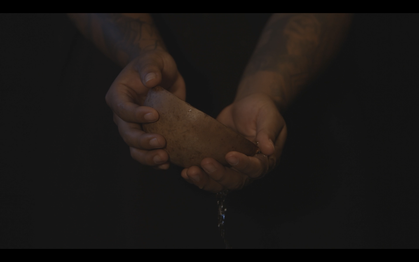

In this audiovisual piece, the result of a collaboration between two artists from the Yucatan Peninsula, instrumental music, sounds and images of nature, typical of the Mayan territory, related to the xook k'íin, were fused together. The creative process behind this work has also been an opportunity for both artists to reconnect with the ancestral knowledge of this territory, which was necessary for their grandparents to build a life thanks to the food provided by the milpa.
The piece was part of the exhibition and can now be viewed on YouTube.



